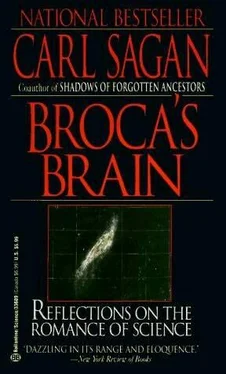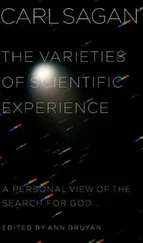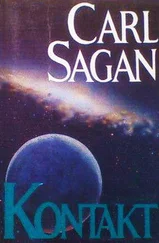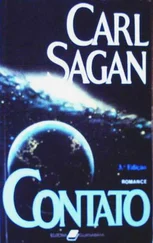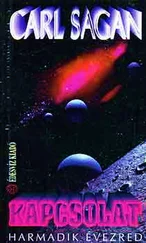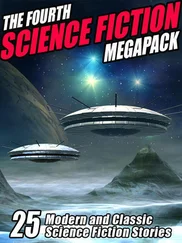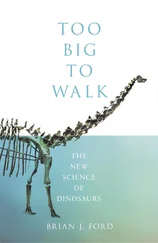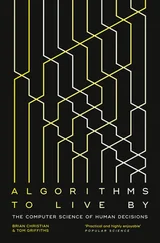Carl Sagan - Broca's Brain - The Romance of Science
Здесь есть возможность читать онлайн «Carl Sagan - Broca's Brain - The Romance of Science» весь текст электронной книги совершенно бесплатно (целиком полную версию без сокращений). В некоторых случаях можно слушать аудио, скачать через торрент в формате fb2 и присутствует краткое содержание. Жанр: Физика, на английском языке. Описание произведения, (предисловие) а так же отзывы посетителей доступны на портале библиотеки ЛибКат.
- Название:Broca's Brain: The Romance of Science
- Автор:
- Жанр:
- Год:неизвестен
- ISBN:нет данных
- Рейтинг книги:3 / 5. Голосов: 1
-
Избранное:Добавить в избранное
- Отзывы:
-
Ваша оценка:
- 60
- 1
- 2
- 3
- 4
- 5
Broca's Brain: The Romance of Science: краткое содержание, описание и аннотация
Предлагаем к чтению аннотацию, описание, краткое содержание или предисловие (зависит от того, что написал сам автор книги «Broca's Brain: The Romance of Science»). Если вы не нашли необходимую информацию о книге — напишите в комментариях, мы постараемся отыскать её.
Broca's Brain: The Romance of Science — читать онлайн бесплатно полную книгу (весь текст) целиком
Ниже представлен текст книги, разбитый по страницам. Система сохранения места последней прочитанной страницы, позволяет с удобством читать онлайн бесплатно книгу «Broca's Brain: The Romance of Science», без необходимости каждый раз заново искать на чём Вы остановились. Поставьте закладку, и сможете в любой момент перейти на страницу, на которой закончили чтение.
Интервал:
Закладка:
Carl Sagan
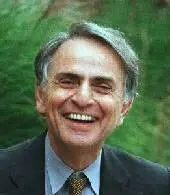

[1]Chlorine is a deadly poison gas employed on European battlefields in World War I. Sodium is a corrosive metal which burns upon contact with water. Together they make a placid and unpoisonous material, table salt. Why each of these substances has the properties it does is a subject called chemistry, which requires more than 10 bits of information to understand.
[2]For example, Lady Wonder, a horse from Virginia, could answer questions by arranging lettered wood blocks with her nose. Since she also replied to queries posed privately to her owner, she was pronounced not only literate but telepathic by the parapsychologist J. B. Rhine ( Journal of Abnormal and Social Psychology, 23 , 449, 1929). The magician John Scarne found the owner would intentionally signal the horse with a whip as Lady Wonder moved her head over the blocks, preparatory to nudging them into words. The owner seemed to be out of the horse’s field of view, but horses have excellent peripheral vision. Unlike Clever Hans, Lady Wonder was an accomplice in an intentional fraud.
[3]A detailed discussion of the Pioneer 10 and 11 plaque can be found in my book The Cosmic Connection (New York, Doubleday, 1973); and the phonograph records aboard Voyager 1 and 2 are comprehensively described in Murmurs of Earth: The Voyager Interstellar Record (New York, Random House, 1978).
[4]The ancient Egyptian phrase for the planet Mars translates to “the red Horns,” Horns being the imperial falcon deity. Thus Egyptian astronomy noted remarkable coloration in celestial objects. But the description of Sirius mentions nothing notable about its color.
[5]Citations to references in this chapter are given at the end of the book.
[6]The page numbers refer to the canonical English-language edition (Velikovsky, 1950).
[7]Actually, Exodus states that manna fell each day except on the Sabbath. A double ration, uninfected by worms, fell instead on Friday. This seems awkward for Velikovsky’s hypothesis. How could the comet know? Indeed, this raises a general problem about Velikovsky’s historical method. Some quotations from his religious and historical sources are to be taken literally; others are to be dismissed as “local embellishments.” But what is the standard by which this decision is made? Surely such a standard must involve a criterion independent of our predispositions toward Velikovsky’s contentions.
[8]The prediction of the relative motions of three objects attracted to each other gravitationally.
[9]An informative and entertaining discussion of the Thera case, and the whole question of the connection of myth with geological events, can be found in the book by Vitaliano (1973); see also de Camp (1975).
[10]Kowal has also recently discovered a very interesting small object orbiting the Sun between the orbits of Uranus and Saturn. It may be the largest member of a new asteroid belt. Kowal proposes calling it Chiron, after the centaur who educated many Greek mythological gods and heroes. If other trans-Saturnian asteroids are discovered, they can be named after other centaurs.
[11]Unexpected discoveries are useful for calibrating pre-existing ideas. G. W. F. Hegel has had a very powerful imprint on professional philosophy of the nineteenth and early twentieth centuries and a profound influence on the future of the world because Karl Marx took him very seriously (although sympathetic critics have argued that Marx’s arguments would have been more compelling had he never heard of Hegel). In 1799 or 1800 Hegel confidently stated, using presumably the full armamentarium of philosophy available to him, that no new celestial objects could exist within the solar system. One year later, the asteroid Ceres was discovered. Hegel then seems to have returned to pursuits less amenable to disproof.
[12]In manned Earth orbital flights, still other problems arise. Consider a religious Muslim or Jew circling the Earth once every ninety minutes. Is he obligated to celebrate the Sabbath every seventh orbit? Spaceflight provides access to environments very different from those in which we and our customs have grown up.
[13]In a commencement address at Clark University on May 18, 1978, I made some similar remarks. Dorothy Mosakowski in the Rare Book Room at Clark’s Goddard Memorial Library then searched for and found this little essay which had been listed as lost. In it we discover that Goddard was attracted to but cautious about the possibility of life on Mars, certain of the existence of extrasolar planetary systems and deduced “that among these countless planets there are conditions of heat and light equivalent to those we experience; and if this is the case, and the planet is near our age and size, there may very likely exist human beings like ourselves, probably with strange costumes and still stranger manners.” But he also says: “It is for the distant future to answer if we will ever realize truth from our surmises.”
[14]Although, remarkably, he was in Worcester in the year 1909 when Sigmund Freud and Carl Gustav Jung gave the first comprehensive discussion in the English language of those institutionalized insights called psychoanalysis. Many American psychiatrists got their first glimpses of the subject from Freud’s Clark University lectures. One wonders if the middle-aged bearded Viennese physician and the young mustachioed American physics graduate student nodded to each other in passing on the Clark University campus, on their way to their separate destinies.
[15]With the sole exception of the meteorites (see Chapter 15).
[16]I have discussed these successful inferences and their spacecraft confirmations in Chapters 12, 16 and 17 of The Cosmic Connection.
[17]White seems also to have been responsible for the exemplary custom of not awarding honorary doctoral degrees at Cornell University: he was concerned about a potential abuse, that honorary degrees would be traded for financial gifts and bequests. White was a man of strong and courageous ethical standards.
[18]Many statements about God are confidently made by theologians on grounds that today at least sound specious. Thomas Aquinas claimed to prove that God cannot make another God, or commit suicide, or make a man without a soul, or even make a triangle whose interior angles do not equal 180 degrees. But Bolyai and Lobachevsky were able to accomplish this last feat (on a curved surface) in the nineteenth century, and they were not even approximately gods. It is a curious concept this, of an omnipotent God with a long list of things he is forbidden to do by the fiat of the theologians.
[19]It is a charming notion that Napoleon actually spent his days aboard ship perusing the highly mathematical Mécanique céleste. But he was seriously interested in science and made an earnest attempt to survey the latest findings (see The Society of Arcueil: A View of French Science at the Time of Napoleon I by Maurice Crosland, Cambridge, Harvard University Press, 1967). Napoleon did not pretend to read all of the Mécanique céleste and wryly wrote to Laplace on another occasion, “The first six months which I can spare will be employed in reading it.” But he also remarked, on another of Laplace’s books, “Your works contribute to the glory of the nation. The progress and perfection of mathematics are linked closely with the prosperity of the state.”
[20]However, from astronomical arguments Aristotle concluded that there were several dozen unmoved prime movers in the universe. Aristotelian arguments for a prime mover would seem to have polytheistic consequences that might be considered dangerous by contemporary Western theologians.
Читать дальшеИнтервал:
Закладка:
Похожие книги на «Broca's Brain: The Romance of Science»
Представляем Вашему вниманию похожие книги на «Broca's Brain: The Romance of Science» списком для выбора. Мы отобрали схожую по названию и смыслу литературу в надежде предоставить читателям больше вариантов отыскать новые, интересные, ещё непрочитанные произведения.
Обсуждение, отзывы о книге «Broca's Brain: The Romance of Science» и просто собственные мнения читателей. Оставьте ваши комментарии, напишите, что Вы думаете о произведении, его смысле или главных героях. Укажите что конкретно понравилось, а что нет, и почему Вы так считаете.
